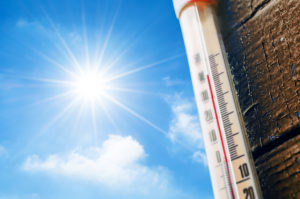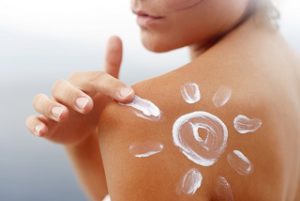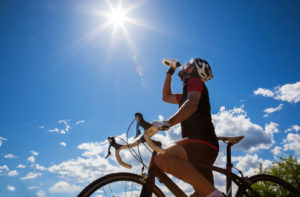Tips for Training & Racing in the Heat
By Chris Newport, Head Coach & Nutritionist
The heat is on. Literally.
We’re smack dab in the middle of North Carolina, which is well known for heat and humidity. And this year is no different. In fact, we went right from winter to summer.
Whether you’re getting ready to race Ironman Raleigh 70.3 or any other event in the heat (soccer, training rides, marathons, etc), try these tips for training and racing in the heat so you can stay cool and maintain your performance.
It’s All About Core Temperature
Exercise raises your core body temperature. Exercising in the heat raises your core body temperature even more. If your core temperature gets too high, you either have to slow down or stop to avoid heat exhaustion or exertional heatstroke, or EHS (when you’re core temperature exceeds 104 degrees F).
Certain people are more prone to EHS if they are not trained, not acclimatized (which takes about 14 or more days), have been recently sick (especially with diarrhea) or are using certain medications like diuretics, excessive NSAIDS, or laxatives.
But just because you’re trained and acclimatized doesn’t rule you out for having heat related issues.
The greatest risk for EHS is when the temperature is over 82 degrees F during high intensity exercise (>75% VO2Max) (source), which is pretty much the case in any running or cycling race or triathlon in the NC summer.
Know What’s In Your Sweat
Sweat is your body’s method of evaporative cooling. Everyone’s sweat is like their fingerprint: it’s unique.
Some people have very concentrated sweat (high in electrolytes like sodium and chloride), while others don’t. If you have rings of white residue around your face after exercise, you’re likely losing a good amount of electrolytes.
Most athletes randomly sports drinks or electrolyte replacements, which can put you in danger of dehydration or worse, hyponatremia (the over dilution of electrolytes, causing sloshy stomach, vomiting, confusion or even death). By consuming the right amount of electrolytes and fluid during exercise, you reduce your risk of cramping, EHS, or poor performance.
The best way to know what’s in your sweat is to get it tested. Luckily, we can help with our Sweat & Hydration Formula.
Using our sweat testing, we’ve seen athletes sweat as little as 12oz and 250mg of sodium per hour, while others have been over 50oz and 5000mg of sodium. Stop guessing and get tested!
Wear White Before Labor Day
We all know that dark colors absorb light (and make us hotter) than lighter colors.
So if possible, wear light colors, or even try or white cooling sleeves like these.
Wear Sunscreen
Sunburns don’t allow body heat to escape properly and will raise core temperature. So if you have any skin exposed, be sure you slather on a safe, sport-friendly sunscreen like this one.
Drink Beforehand (but not too much)
Many athletes have the misconception that if they’re drinking excessively in the days leading up to an event, then they’re at lower risk of dehydration. Your kidneys have no idea you’re preparing for an event. They continue to do their job just like they should and don’t “retain” that fluid.
If you drink too much, especially in the hours leading up to the event, you can put yourself at risk of hyponatremia (water intoxication), which is even worse than dehydration in most cases.
Drink normally so that your urine is a pale yellow color. Check out our pee chart on our Hydration Guide.
If you want to be a little more technical, you can test your urine using a refractometer rather affordably too.
Pre-Race Cooling Tips
Remember, keeping yourself cool will allow you to race and train faster in the heat. So you can use internal (ie drinking) and external (ie skin cooling) methods.
You might want to skip that pre-race hot cup of coffee or tea if you can. Or have it several hours beforehand. Instead, go for icy beverages in the 10-15 minutes before you start, which will help keep core temperature down.
You can also try a cooling vest (or an air conditioned car or room) in the minutes leading up to training or racing. It’s literally a jacket that you wear with ice packs like this one.
Cooling Tips While Training & Racing in the Heat
- Drink icy cold fluids if you can. In one study, athletes drank ice slushies every 15 minute during exercise, which lowered their perception of effort and gut temperatures. Pro Tip: You can keep fluids cold by freezing them the night before or using insulated water bottles like these.
- Be sure to pour ice or water over your head every chance you get. Don’t pass up an aid station! You can even pack an extra water bottle just to pour over your head.
- Tuck ice everywhere…under your hat, in your shorts, in a sports bra, down your back, and anywhere else it will stay!
- Hold icy or cold things like these instant cold packs. It may help you feel cooler.
- Wear a cooling towel that you can wrap around your neck or head like this one.
Post-Race Cooling Tips
Remember, it’s all about getting that core temperature back down!
- Get to a shaded or air conditioned area pronto!
- If you can, remove excess clothing.
- Lie on your back and elevate your legs.
- Try a post workout Popsicle or drink cold fluids, preferably some sort of electrolyte drink water with some salty foods like potato chips (also, pay attention to your cravings).
- Try an ice bath (aka “post-exercise cold water immersion”), or try that cooling vest again. They are intense (don’t stay in there too long!), but they will definitely cool you off. They may also help with recovery based on new research.
What are your favorite cooling methods during training and racing? Please share with #FindYourEdge
Be sure to book your Sweat & Hydration Formula online to fuel your unique needs!
Stay safe and cool out there!






